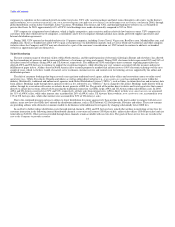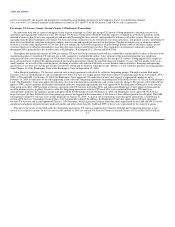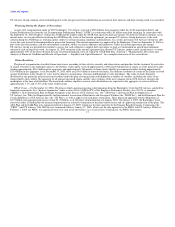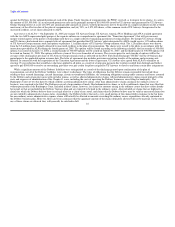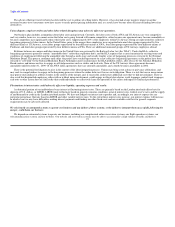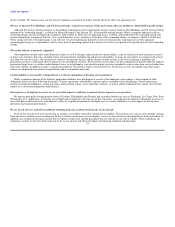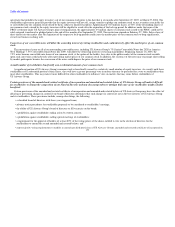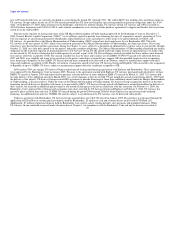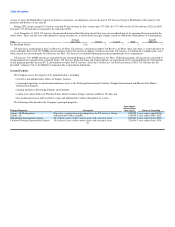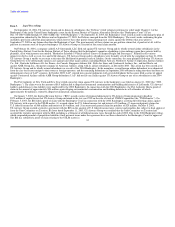US Airways 2005 Annual Report Download - page 28
Download and view the complete annual report
Please find page 28 of the 2005 US Airways annual report below. You can navigate through the pages in the report by either clicking on the pages listed below, or by using the keyword search tool below to find specific information within the annual report.
Table of Contents
important flight information. Substantial or repeated website, reservations systems or telecommunication systems failures could reduce the attractiveness of
our services and could cause our customers to purchase tickets from another airline. Furthermore, we are in the process of integrating the Company's
automated systems. Any disruption in these systems could result in the loss of important data, increase our expenses and generally harm our business.
If we incur problems with any of our third party service providers, our operations could be adversely affected by a resulting decline in revenue or negative
public perception about our services.
Our reliance upon others to provide essential services on behalf of our operations may result in the relative inability to control the efficiency and
timeliness of contract services. We have entered into agreements with contractors to provide various facilities and services required for our operations,
including express operations, aircraft maintenance, ground facilities, reservations and baggage handling. Similar agreements may be entered into in any new
markets we decide to serve. All of these agreements are subject to termination after notice. Any material problems with the efficiency and timeliness of
contract services could have a material adverse effect on our business, financial condition and results of operations.
The travel industry, materially adversely affected by the September 11, 2001 terrorist attacks, continues to face on-going security concerns and cost
burdens associated with security.
The attacks of September 11, 2001 materially impacted and continue to impact air travel. The Aviation Security Act mandates improved flight deck
security; deployment of federal air marshals onboard flights; improved airport perimeter access security; airline crew security training; enhanced security
screening of passengers, baggage, cargo, mail, employees and vendors; enhanced training and qualifications of security screening personnel; additional
provision of passenger data to U.S. Customs and enhanced background checks. These increased security procedures introduced at airports since the attacks
have increased costs to airlines. A concurrent increase in airport security charges and procedures has also had a disproportionate impact on short-haul travel,
which constitutes a significant portion of US Airways' flying. We would also be materially impacted in the event of further terrorist attacks or perceived
terrorist threats.
Increases in insurance costs or reductions in insurance coverage may adversely impact our operations and financial results.
The terrorist attacks of September 11, 2001 led to a significant increase in insurance premiums and a decrease in the insurance coverage available to
commercial air carriers. Accordingly, our insurance costs increased significantly and our ability to continue to obtain insurance even at current prices remains
uncertain. In addition, we have obtained third party war risk (terrorism) insurance through a special program administered by the FAA, resulting in lower
premiums than if we had obtained this insurance in the commercial insurance market. The program has been extended, with the same conditions and
premiums, until August 31, 2006. Under Vision 100, the President may continue the insurance program until March 30, 2008. If the federal insurance program
terminates, we would likely face a material increase in the cost of war risk insurance. Because of competitive pressures in our industry, our ability to pass
additional insurance costs to passengers is limited. As a result, further increases in insurance costs or reductions in available insurance coverage could have an
adverse impact on our financial results.
Changes in government regulation could increase our operating costs and limit our ability to conduct our business.
Airlines are subject to extensive regulatory requirements. In the last several years, Congress has passed laws and DOT, FAA, TSA and the Department of
Homeland Security have issued a number of directives and other regulations. These requirements impose substantial costs on airlines. Additional laws,
regulations, taxes and airport rates and charges have been proposed from time to time that could significantly increase the cost of airline operations or reduce
revenues. The ability of U.S. carriers to operate international routes is subject to change because the applicable arrangements between the U.S. and foreign
governments may be amended from time to time, or because appropriate slots or facilities may
22




